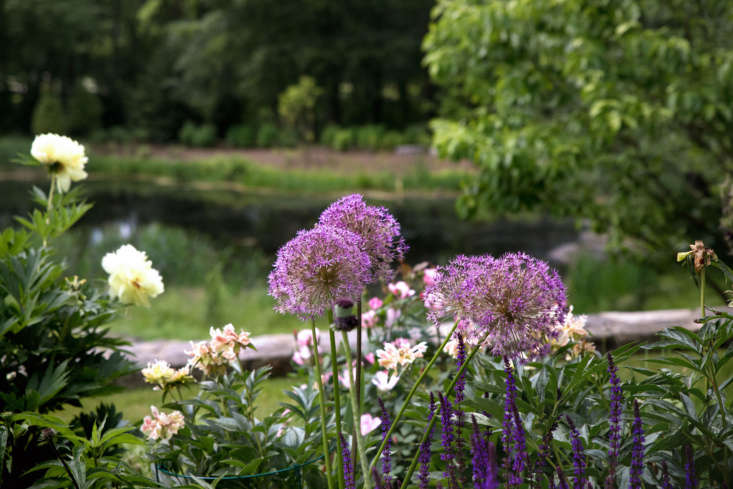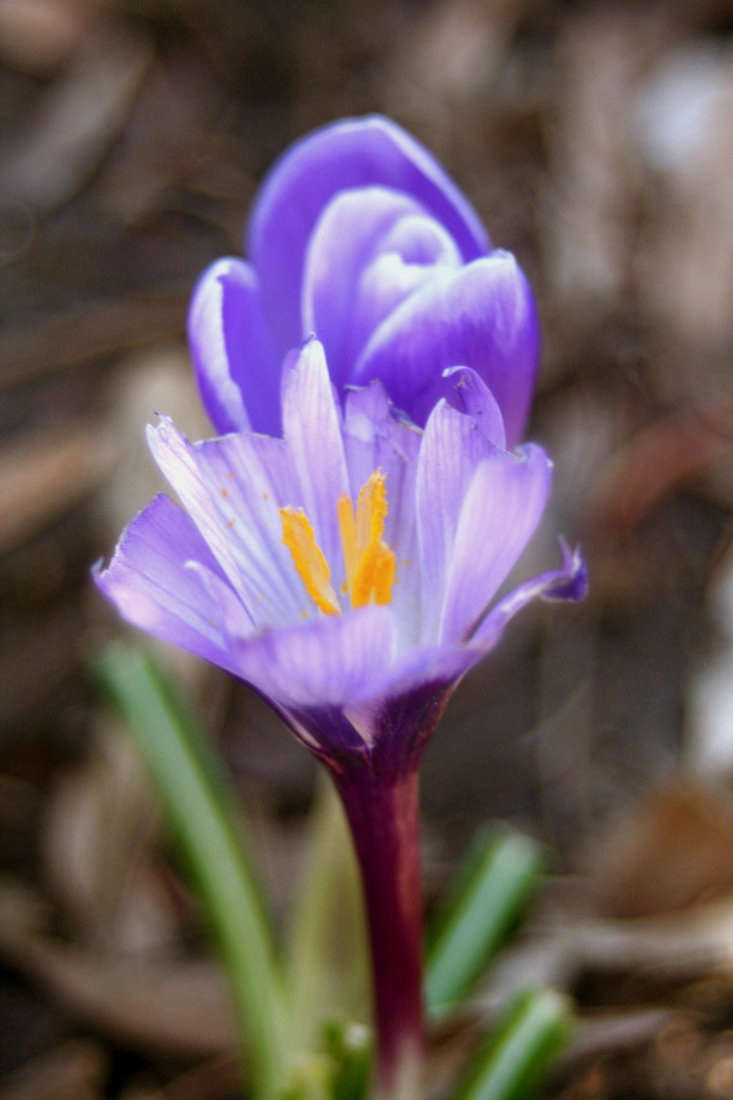I’ve always known in theory that if you plant spring-flowering bulbs (such as tulips, daffodils, crocuses, and alliums) you can fill your garden with successive waves of color for three months while you wait for summer. But in my garden, after the spring flowers on the azaleas and rhododendrons fade? Nothing—until June. I eye my neighbors’ more colorful gardens with envy and initiate late-night talks with my husband about why this is the year we should hire a landscape designer.
This fall I plan to be proactive and plant bulbs—which I know is a thing you do in autumn because one year I went to our local nursery and asked for alliums. (I’m particularly enamored with the extraterrestrial look of alliums, with their large pompom heads and tall, slender stalks.) But it was during the height of summer, and the nice lady who worked at the nursery had to break it to me that I’d have to wait until September or later for the bulbs to be available for purchase. Like many other bulbs, they are planted in the fall and bloom in the spring, she told me, with not the slightest bit of disdain.
A job requirement for working at nurseries must be an uncanny ability to refrain from rolling one’s eyes when asked idiotic questions. Thankfully, my interview with Barbara Pierson, nursery manager of White Flower Farm, in which I asked beginner questions about spring-flowering bulbs, was conducted over email. (Thank you, Barbara, for not inserting any eye-roll emojis.) Here’s what I learned:
Q: What are bulbs, anyway?

A: A bulb is “essentially a storage organ” for plants, says Barbara; all the food they need is concentrated in a compact, onion-shaped mass. “True bulbs have scales, which are fleshy and become leaves after the bulb begins to grow.” They’re often lumped together with corms, rhizomes, and tubers, because they all grow underground and produce plants, but they are different. Corms don’t have scales; rhizomes grow horizontally and can produce more plants; and tubers have eyes (like potatoes) that can grow into sprouts or roots. (See Everything You Need to Know About Bulbs and Tubers for a roundup of some of our favorite springtime bulb and tuber flowers.)
Q: Which bulbs are the easiest to grow?

A. “Bulbs are a great beginning for gardeners because they don’t need special growing techniques or knowledge,” says Barbara. (This is music to my ears.) Since the nutrients are stored in the bulb, “fancy soil preparation” isn’t necessary. The hardest part may be figuring out which way to orient the bulb when you plant. For this reason, Barbara recommends big bulbs such as daffodils, tulips, and alliums: “The larger the bulb size, the more obvious the roots, which helps when determining which side is up.” Of the three, daffodils and alliums have the longest-lasting blooms, though heat and/or rain can shorten their flowers’ life span. (See Everything You Need to Know About Ornamental Alliums.)
Q: When is the best time to plant bulbs?
A: Soon. But f you have plans this weekend, don’t fret. “The planting time for bulbs is a long window of time during fall,” says Barbara. “Rule of thumb for most is to have them root in for six weeks before the ground is frozen. The ground doesn’t freeze here in Connecticut until early to mid-December. In most areas, September through mid-November is prime time.”
Tip: Tulips can be damaged by warm soil, so they are planted later in warmer zones. If you’ve already bought your bulbs but the weather is still balmy, be sure to store them in a cool, dry place, like a garage, basement, or pantry. “A refrigerator is not necessary and can actually force them into early flowering once planted,” she says.

See more growing tips in Crocuses: A Field Guide to Planting, Care & Design in our curated guides to our favorite Bulbs & Tubers 101.
Q: What are tips for a healthy, robust bloom?

A: Choose a sunny spot. Consider adding bulb food in the hole before you plant. “It isn’t necessary but can produce larger blooms for a longer period,” says Barbara. Water your bulbs after planting. If there’s ample rain in the fall, you don’t need to water again, but if there’s a dry spell, you should water them a few more times. For more on how to properly plant bulbs, see Gardening 101: How to Plant a Bulb. And for a chart on which bulbs bloom when, go here.

Q: How many bulbs should you plant together?
A: To avoid the sad, sparse look of a lone tulip swaying in the breeze or a single row of spaced-out alliums, plant in clumps (not rows) and plant them closer than the instructions recommend, says Barbara. Her tips for specific bulbs: “For allium, you will plant them in threes. For daffodils and tulips, ten to twelve in a group is best. I like when they emerge looking like a bouquet of flowers, and large swaths or drifts of blooms planted closely is beautiful. For daffodils and tulips, I only give them two to three inches apart. For crocus and minor bulbs such as Eranthis, plant them in groups very close together for a great show in spring.”
Be sure to check out our field guide on Bulbs & Tubers. For a truly easy way to plant bulbs, consider a bulb planter; you can find one here: 10 Easy Pieces: Bulb Planters.
For more of our beginner gardening series, see:
- Your First Garden: What You Need to Know About Raking Leaves
- Your First Garden: What You Need to Know About Topsoil
- The Garden Decoder: What Happens When Edible Plants ‘Bolt’?
- The Garden Decoder: What Is a ‘Cool-Season Crop’?









Have a Question or Comment About This Post?
Join the conversation